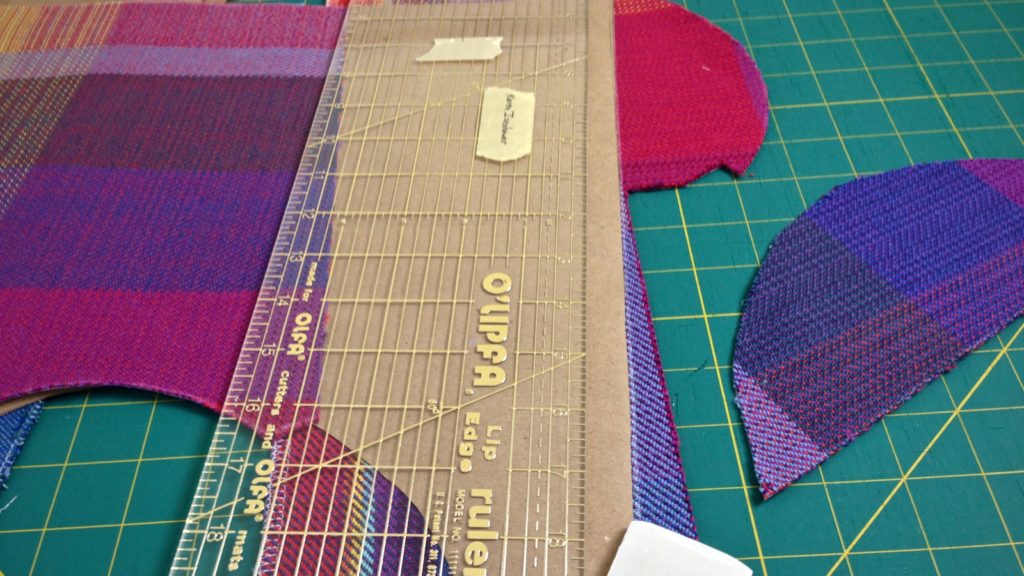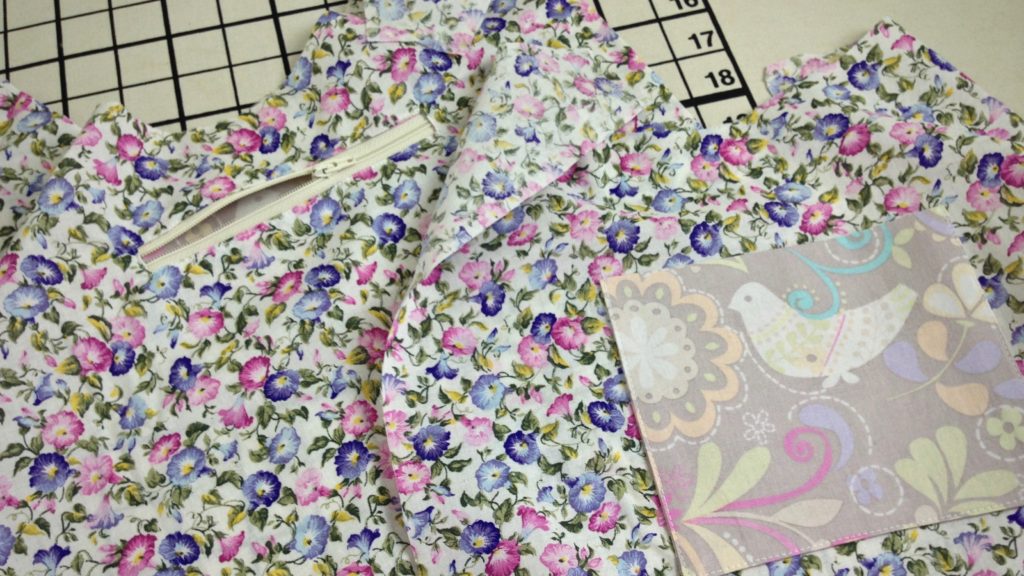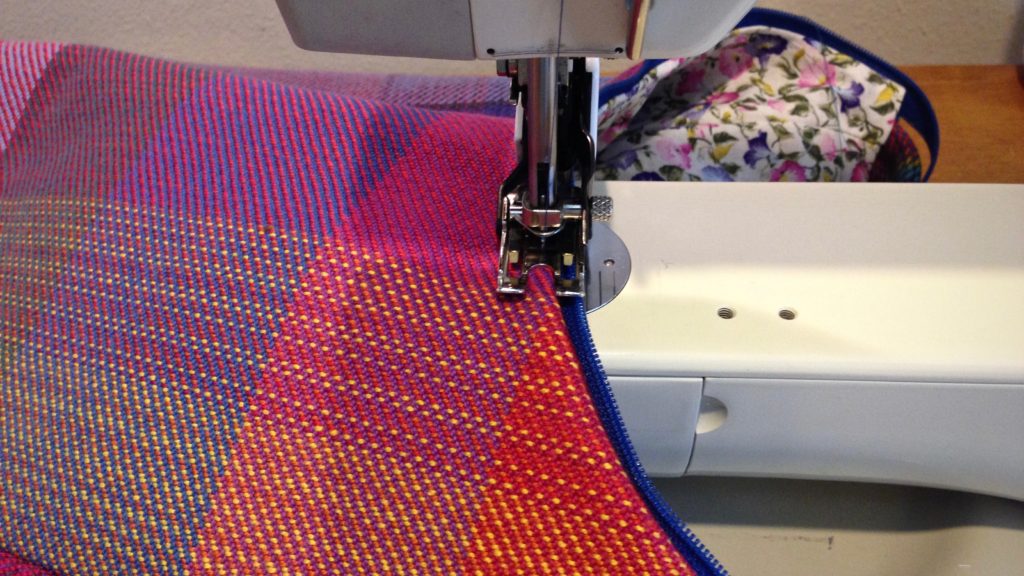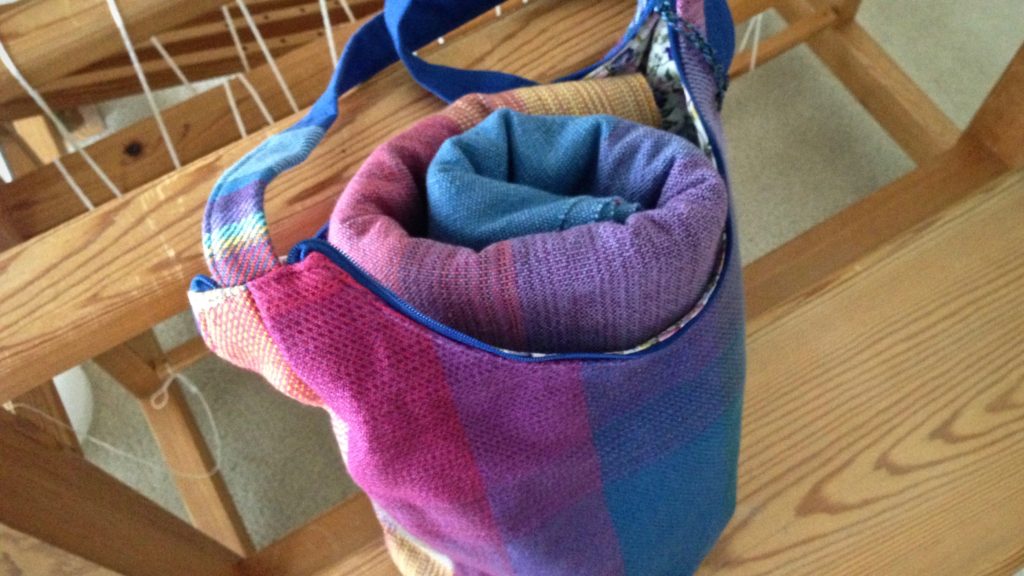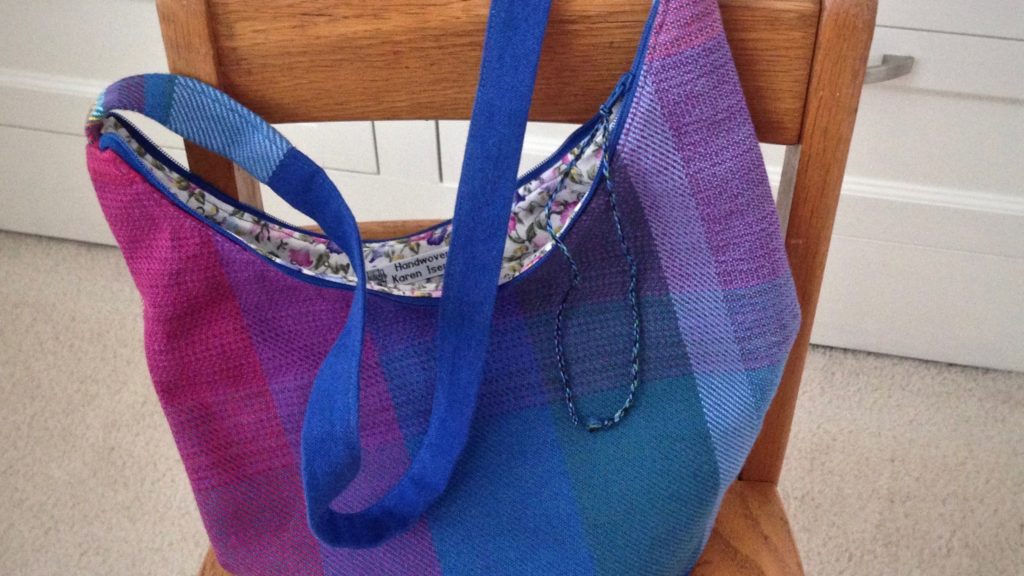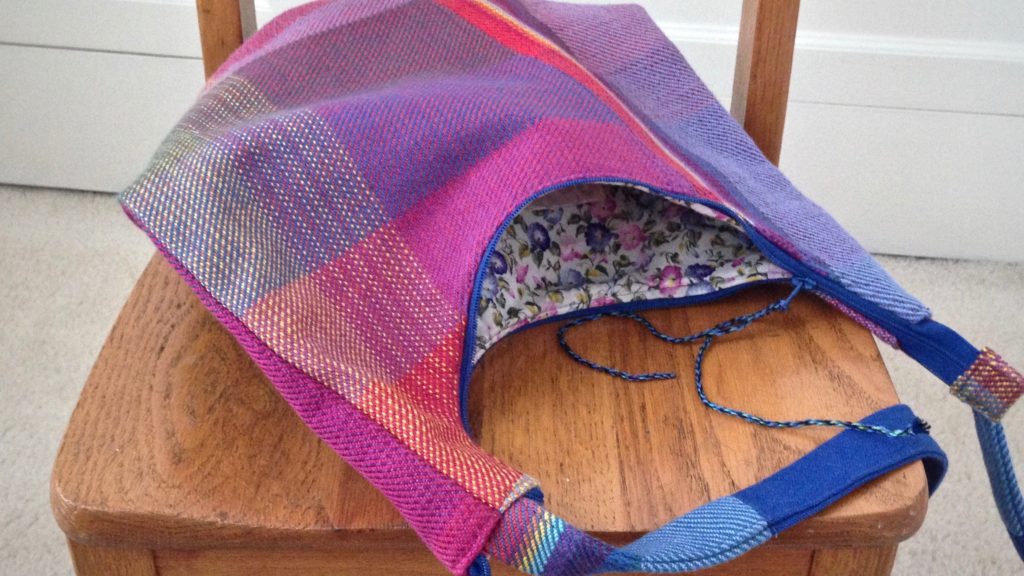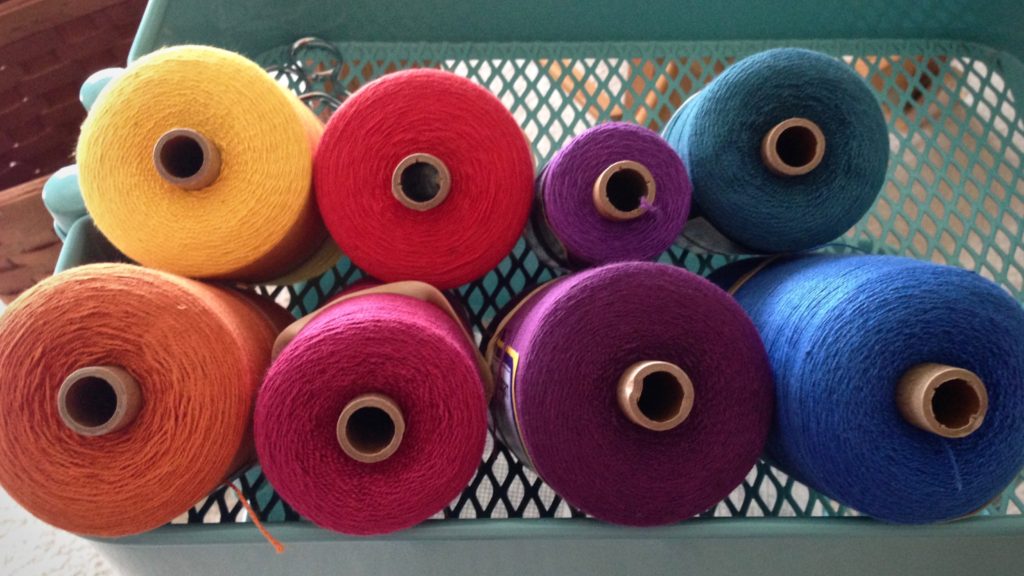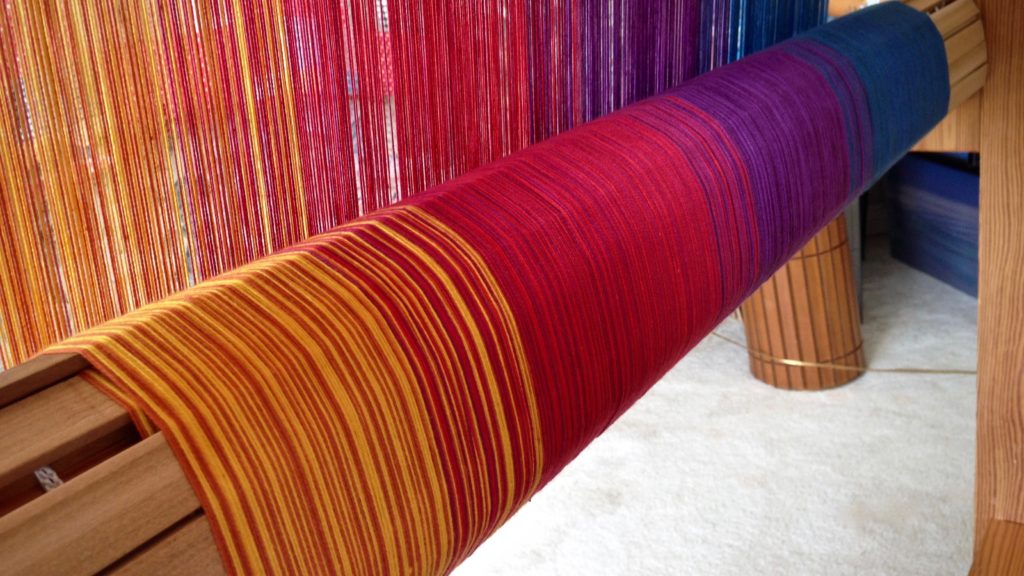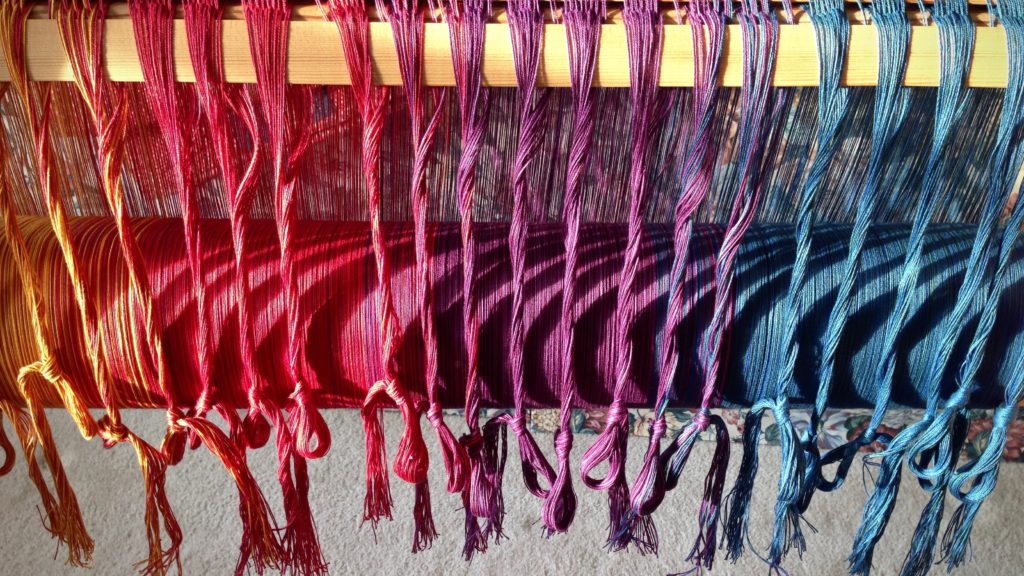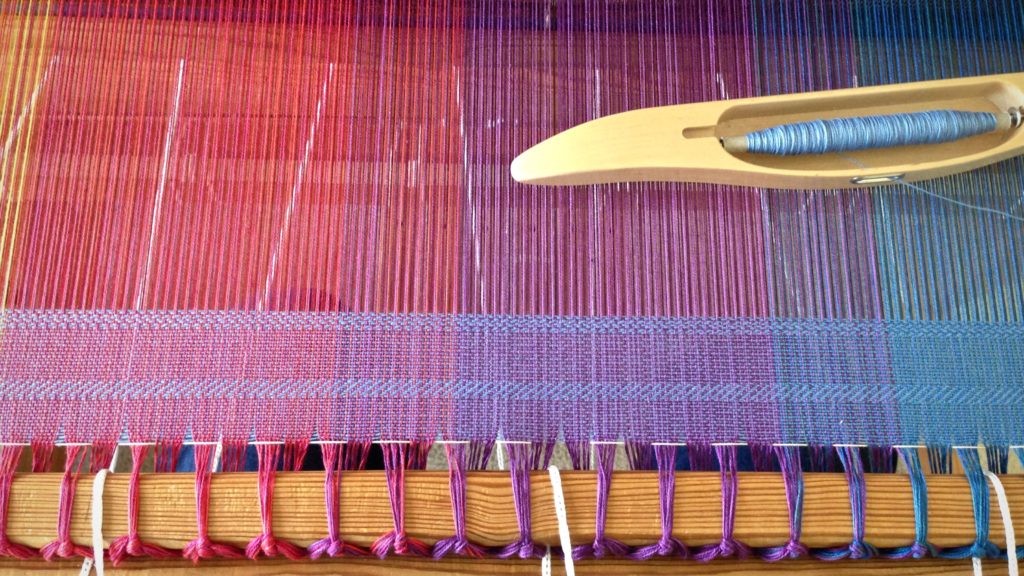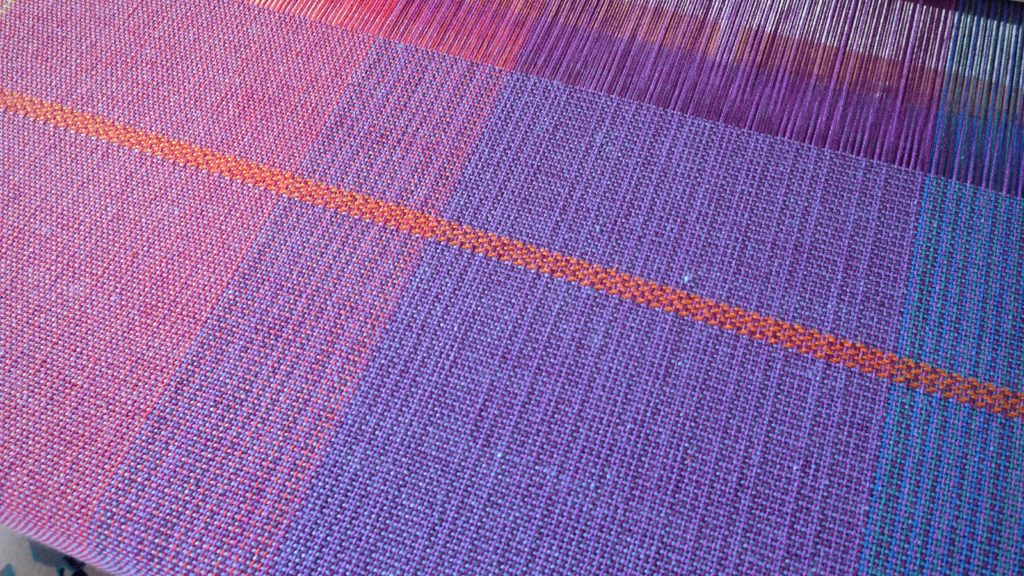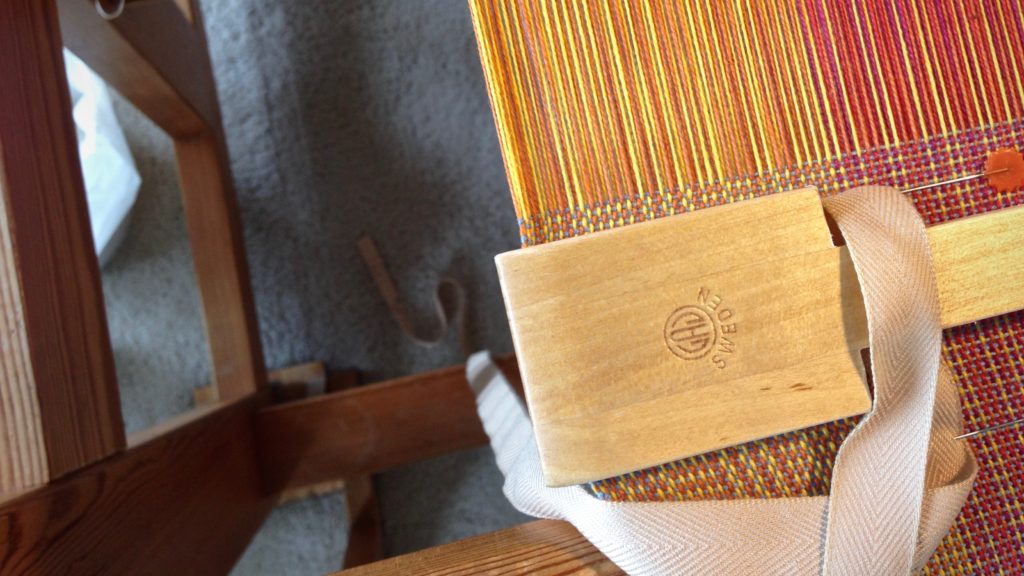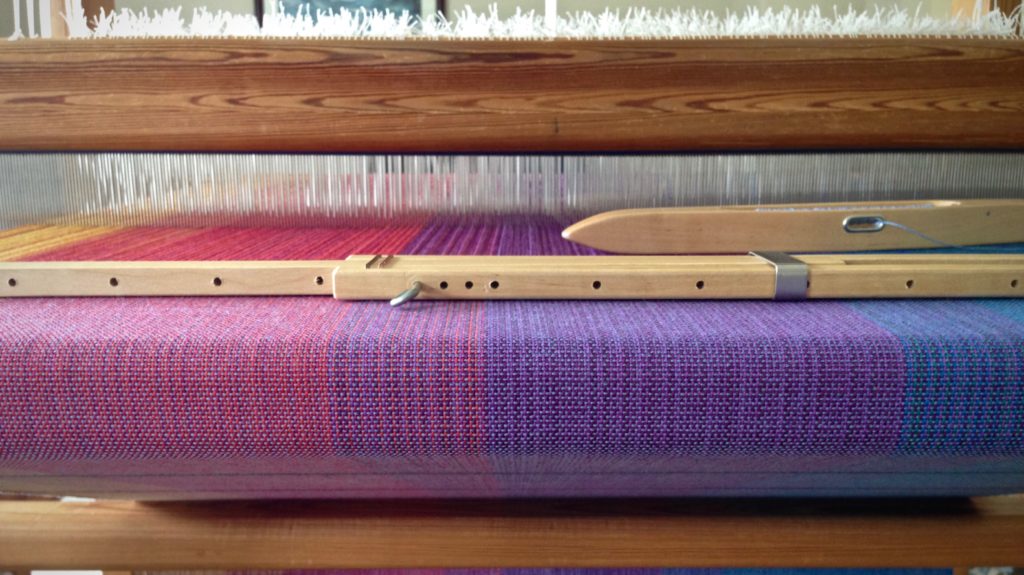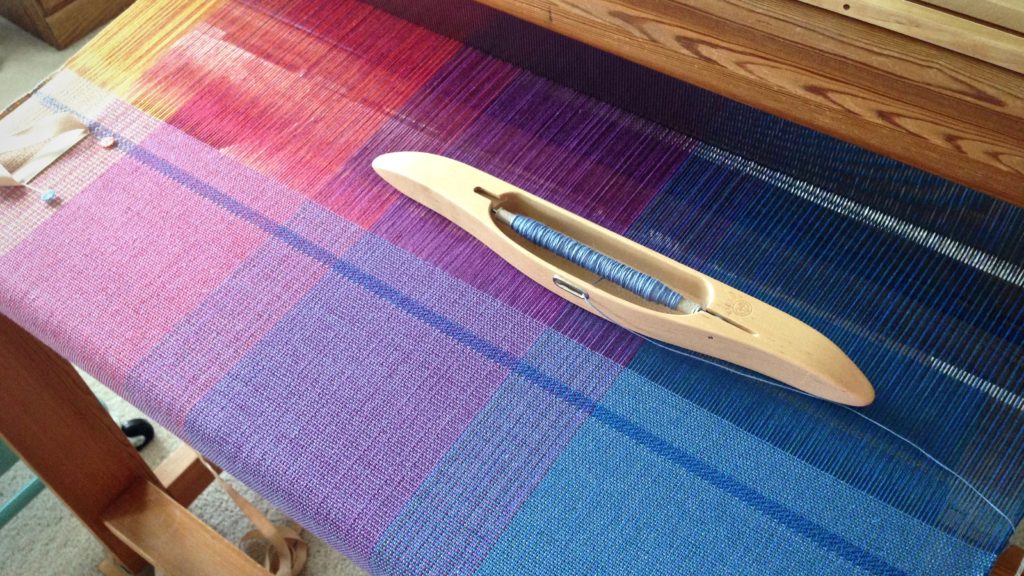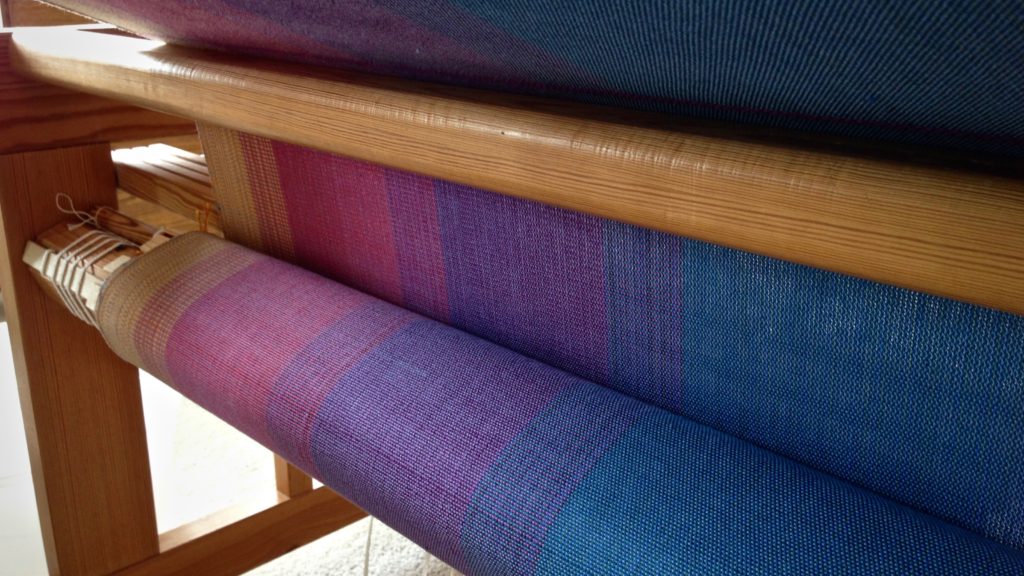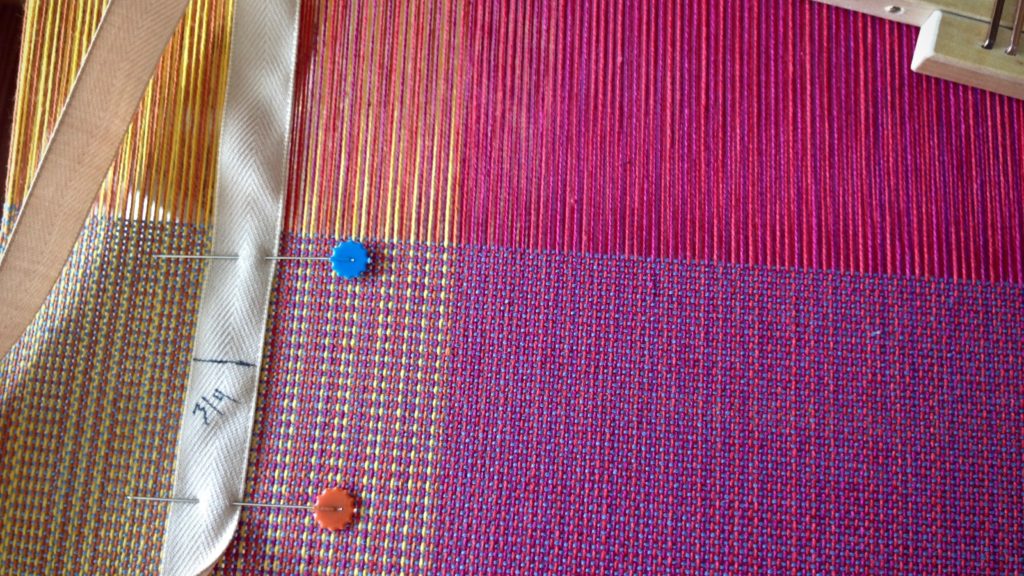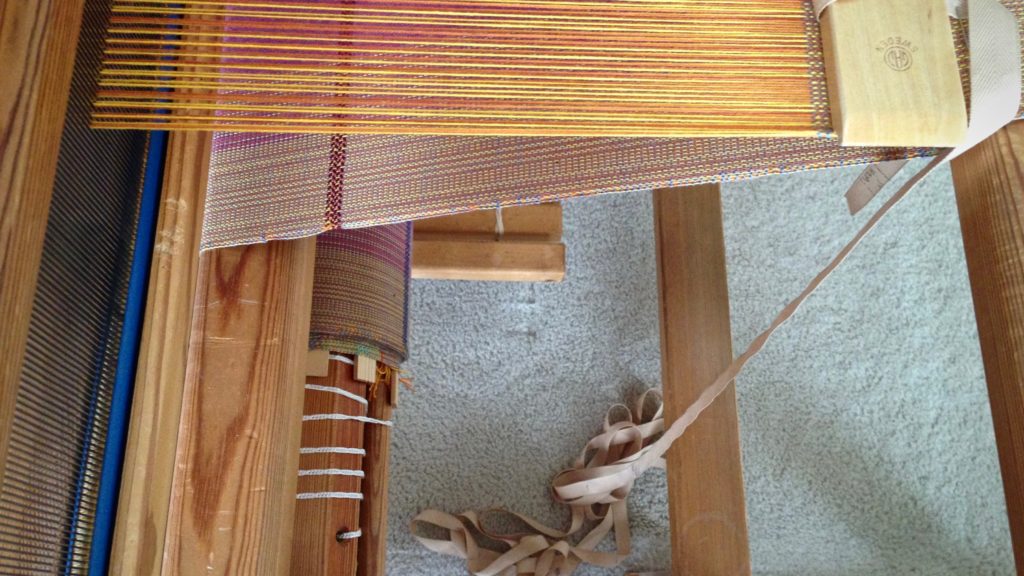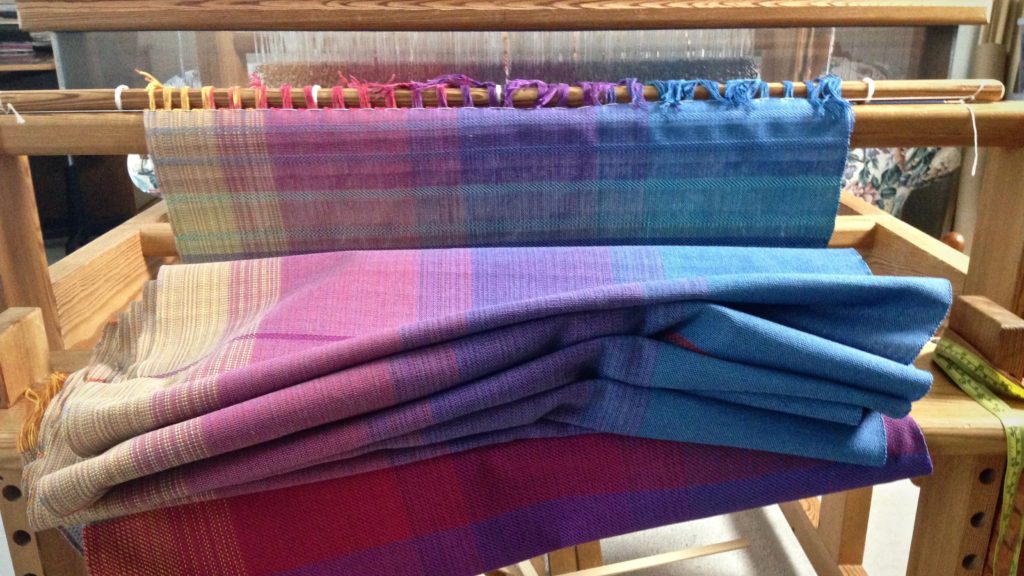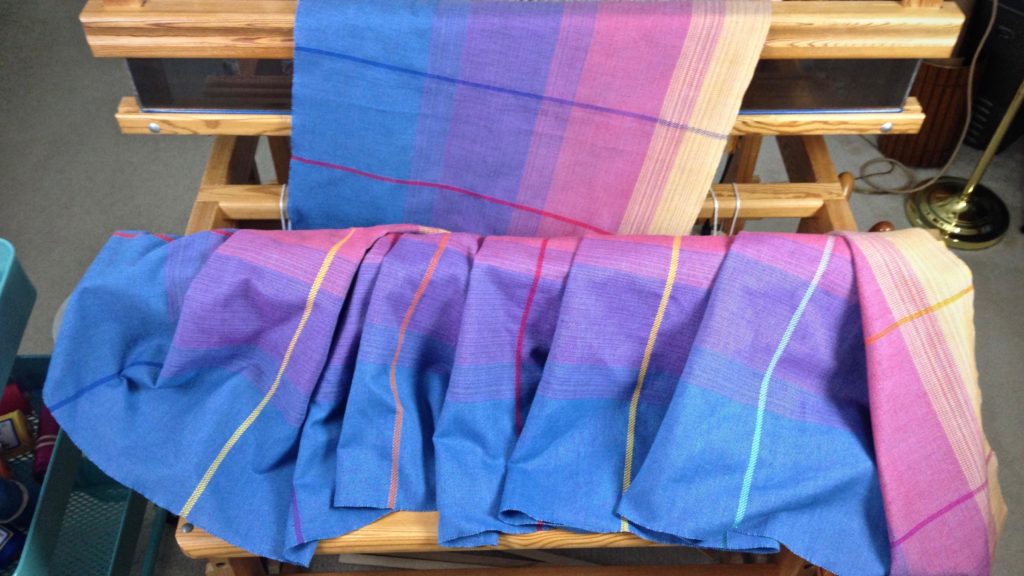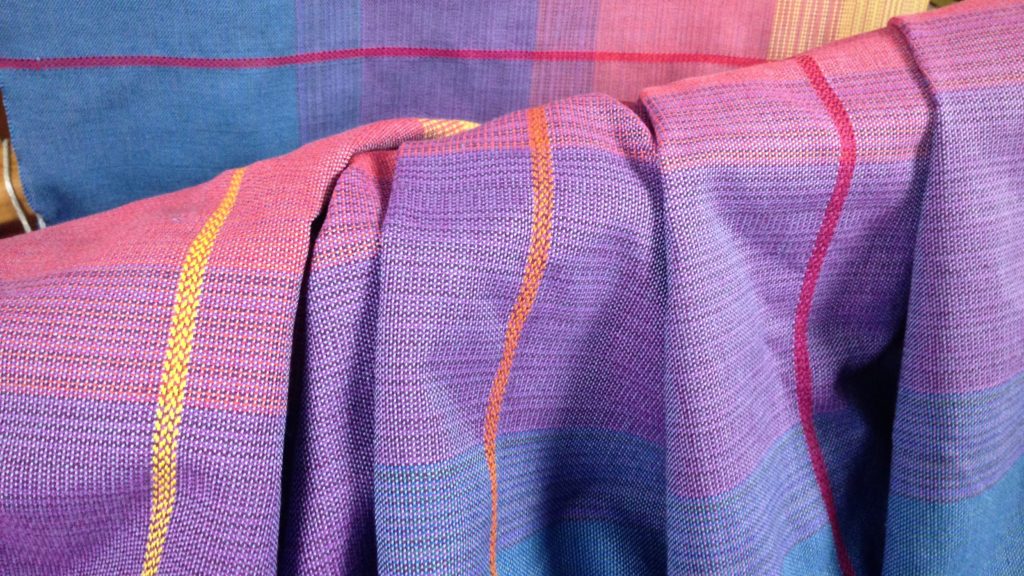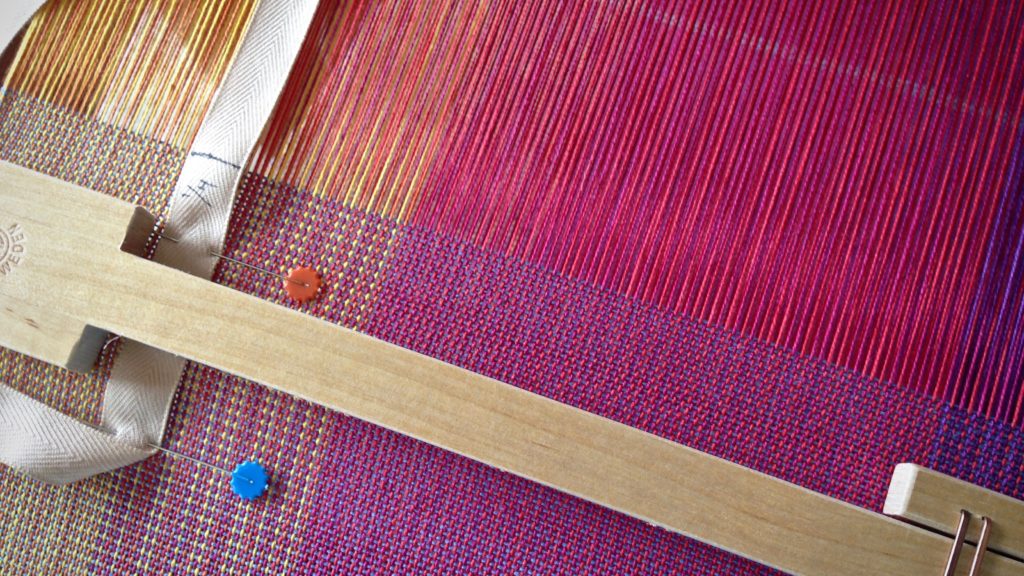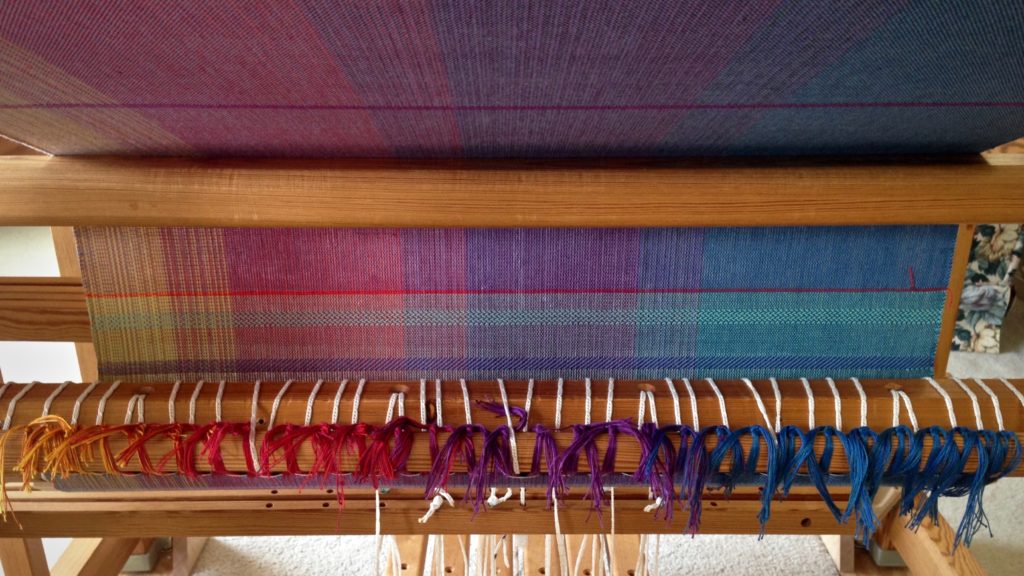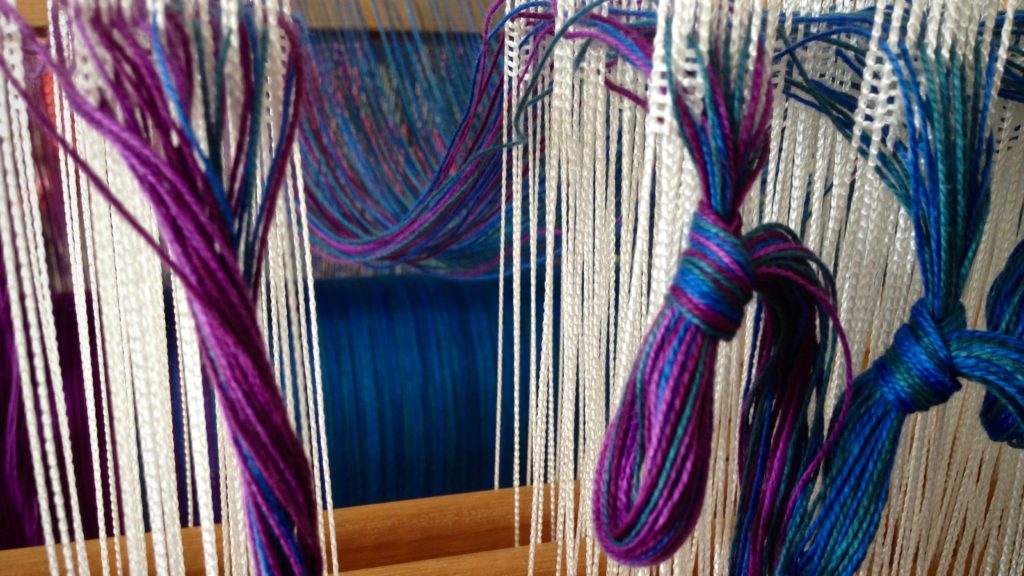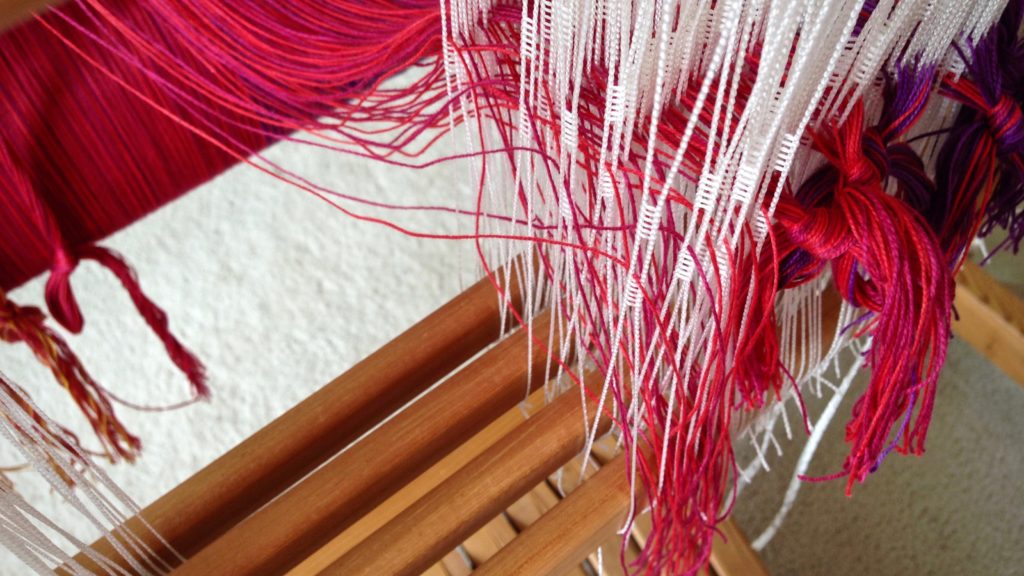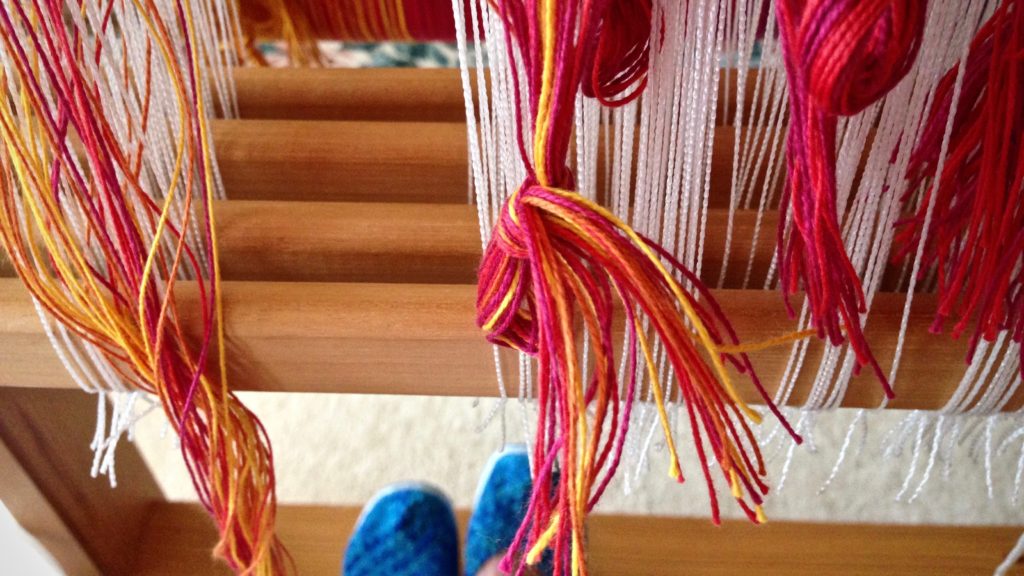I am happily dressing my two looms at the same time. First, wind one warp, and then the other. Beam a warp on the big loom (Glimåkra Standard); and then, on the baby loom (Glimåkra Ideal). Thread the big loom; thread the baby loom. Back and forth. Soon, two looms will be ready!
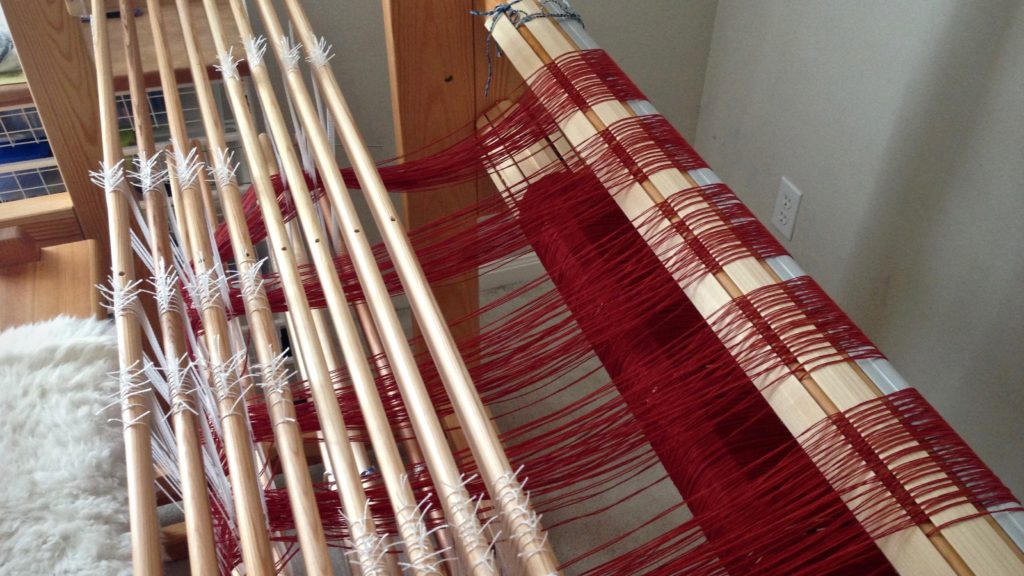
Both looms are being dressed for rag rugs. Rag rug heaven! The big loom is threaded for double binding, using eight shafts. The baby loom has four-shaft rosepath threading. I am eager to get everything tied up so I can weave!
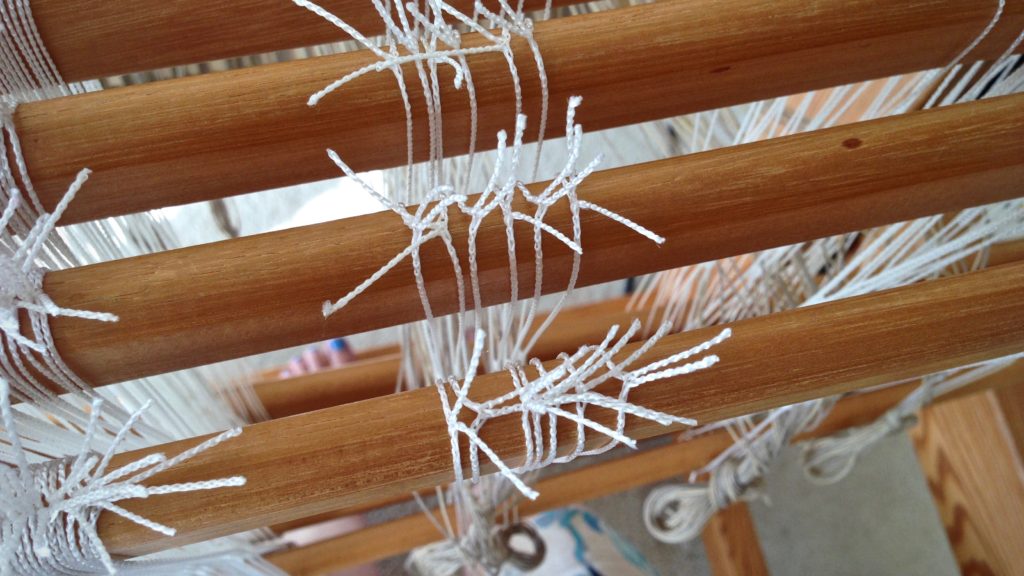
There’s an order to things in the universe, like there’s an order to dressing the looms. It matters how we live. It makes sense to live according to the way the Grand Weaver set things up. God knows who we are and what we need. And he provides the threads, like integrity, and other virtues, that are spun by his own hand. The individual pattern comes to life when the threads he has woven in our inner being become our outward expression. And we know the Weaver enjoys the work of his hands.
May threads of virtue be woven in your cloth.
Happy weaving,
Karen

